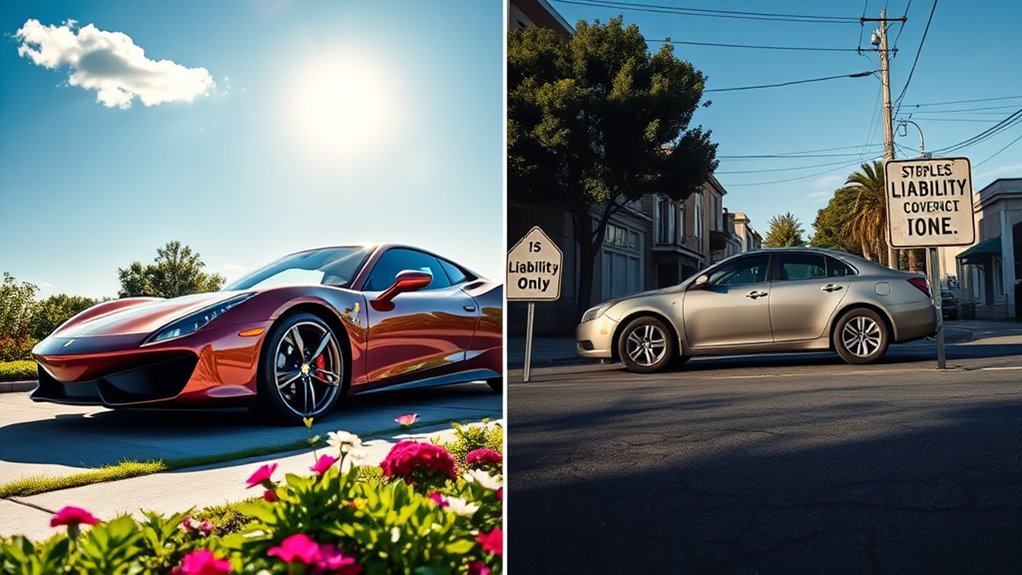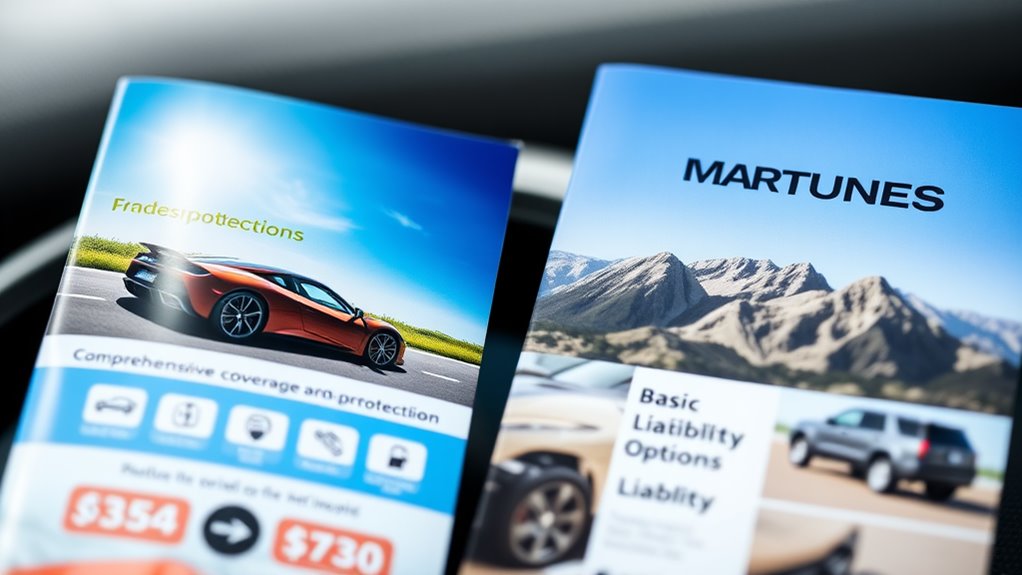Understanding the key differences in car insurance types is essential for making informed decisions. You need to take into account the coverage scope, the costs involved, and the eligibility factors that could affect your choice. Each type serves distinct purposes, impacting both your financial security and compliance with state laws. As you weigh your options, think about which aspects matter most to you and how they align with your unique situation.
Key Takeaways
- Liability Coverage is mandatory and protects others in accidents where you are at fault, while other types cover your own vehicle.
- Collision Coverage repairs your vehicle after accidents, regardless of fault, unlike liability coverage which doesn't cover your own damages.
- Extensive Coverage protects against non-accident incidents like theft and natural disasters, while liability and collision focus solely on accident-related damages.
- Uninsured/Underinsured Motorist Coverage safeguards you from drivers without adequate insurance, which is not addressed by basic liability coverage alone.
- Non-owner Car Insurance provides liability coverage for individuals driving vehicles they do not own, differing from standard policies tied to a specific vehicle.
Coverage Scope and Limitations

Understanding the various types of car insurance coverage is essential for any driver, as it can considerably impact your financial protection in the event of an accident or damage.
Liability coverage, often mandatory, protects others in accidents where you're at fault. Collision coverage repairs your vehicle after accidents, regardless of fault, while extensive coverage protects against non-accident damages like theft and natural disasters. Collision coverage may be mandated by financing companies for vehicles with outstanding loans, ensuring that your investment is protected. Additionally, non-owner car insurance is specifically designed for individuals who drive vehicles they do not own, providing liability coverage in those situations.
Liability coverage safeguards others in at-fault accidents, while collision and extensive coverage address vehicle repairs and non-accident damages.
Uninsured/underinsured motorist coverage safeguards you against drivers lacking adequate insurance. Be aware of coverage limits, which vary by state and can cap payouts.
Additionally, deductibles apply to collision and extensive claims, meaning you'll pay out-of-pocket before insurance kicks in. Understanding these scopes and limitations helps you tailor your coverage to your specific needs.
Cost Considerations and Premium Differences
When considering car insurance, you'll find that multiple factors influence premiums, making it essential to shop around for the best rates.
Several key elements can greatly affect your costs:
- Vehicle type and brand, with luxury and sports cars costing more to insure.
- The age and value of your car; newer vehicles typically incur higher repair costs.
- Safety features and crash test ratings impact premium calculations.
- Vehicle size and weight may lead to higher premiums for larger models.
- State-specific regulations and market competition can create notable price variations.
Understanding these factors can empower you to make informed choices, ultimately helping you find the coverage that fits both your needs and budget.
Eligibility and Usage Scenarios
Premiums can vary widely based on eligibility criteria and specific usage scenarios within car insurance. Your age, driving record, vehicle type, location, and credit score all influence your eligibility for better rates.
For instance, a clean driving record can lead to lower premiums, while high-risk drivers may face higher costs.
Certain situations necessitate specific coverages, such as accidents with uninsured drivers or theft. If you lease or finance a vehicle, lenders typically require collision and extensive coverage.
Additionally, in no-fault states, Personal Injury Protection (PIP) is essential for covering medical expenses. Understanding these eligibility factors and usage scenarios helps you select the right insurance to protect against financial risks effectively.
Conclusion
In traversing the intricate maze of car insurance types, understanding these key differences is your compass. Whether you need the protective shield of liability, the safety net of collision, or the all-encompassing blanket of extensive coverage, each option has its unique role. Weighing costs, coverage, and your specific needs will steer you toward the right choice. Remember, the right insurance isn't just a policy; it's your peace of mind on the road, ensuring you're prepared for whatever life throws your way.

